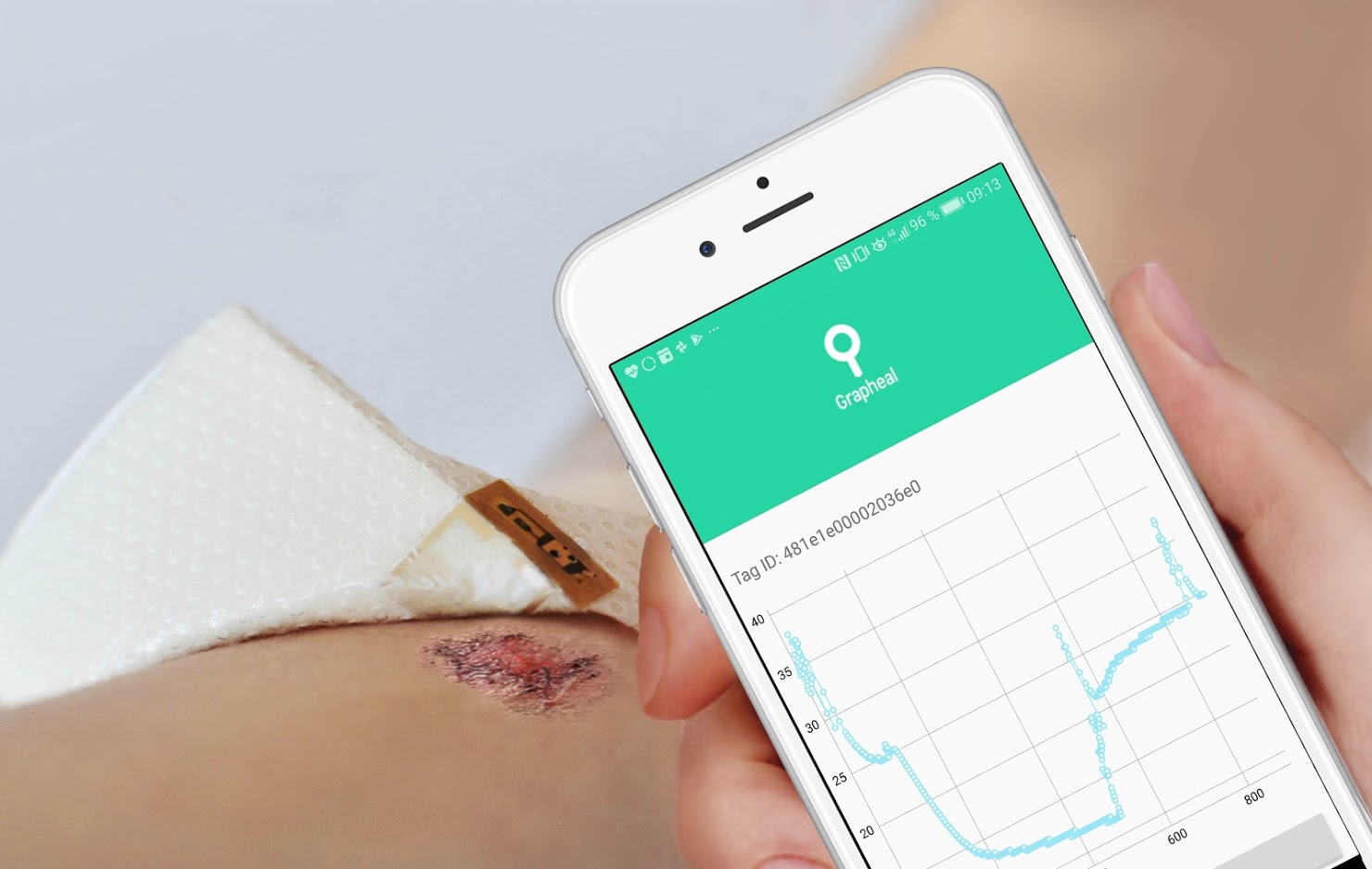By: Tom Foley
石墨烯能改變醫(yī)療保健的未來嗎? 從基于石墨烯的可穿戴監(jiān)控,以優(yōu)化運動員的狀態(tài)或跟蹤傷口愈合到可以記錄大腦活動或提供人工視網(wǎng)膜視覺的植入物,石墨烯和二維材料在許多下一代生物醫(yī)學技術中具有巨大的潛力。

為此,石墨烯旗艦公司的幾個合作伙伴,以及我們的一些行業(yè)領導的先鋒項目和支項目公司,正在致力于令人興奮的發(fā)展,這可能會給市場帶來新的基于石墨烯的醫(yī)療設備。 下面,我們將著重介紹下其中六項有希望的創(chuàng)意。
一個是Chemsens,一個開發(fā)基于石墨烯的人類皮膚石膏傳感器的倡議。 石墨烯能夠快速檢測和分析關鍵的生物指標,如汗水中的鈉、鉀、乳酸和葡萄糖水平。 石膏可以測量生物物理壓力,然后將信息傳遞到電子設備,并可以幫助運動員充分優(yōu)化他們的訓練。 該傳感器具有四個獨立的部件,這些部件可以單獨操作,并利用紙基流體技術改善汗液流入傳感器,能夠溫和、快速地檢測,同時確保操作是安全的用戶。
同樣在可穿戴設備日益擴大的領域,GraPheal開發(fā)了一種開創(chuàng)性的可穿戴貼片來遠程監(jiān)測慢性傷口。 柔性和透明的基于石墨烯的生物傳感器連續(xù)記錄和存儲傷口生物特征數(shù)據(jù),然后通過智能手機應用程序?qū)⑵鋫鬟f給云。 利用這一技術,醫(yī)生和護士可以遠程監(jiān)測患者的傷口愈合情況,如果出現(xiàn)任何感染或醫(yī)療并發(fā)癥,可以立即發(fā)出警報。 GraPheal目前還在開發(fā)一種基于唾液取樣的石墨烯輔助診斷測試,以快速篩選Covid-19感染。
新的支項目公司InbrainNeuroElectronics誕生于一種開拓精神。 來自西班牙icn2和icrea的腦科學家正在研究基于石墨烯的植入物,以記錄大腦活動,用于治療帕金森病和癲癇等腦疾病。 智能設備是建立在一個創(chuàng)新的石墨烯電極周圍,以解碼高保真的神經(jīng)信號,使個性化的治療反應。 該支項目已經(jīng)吸引了四家投資公司在2020年早些時候的€100萬投資,以加快其發(fā)展。
HEALTHCARE AND BIOMEDICINE ENHANCED BY GRAPHENE
By: Tom Foley
Could graphene transform the future of healthcare? From graphene-based wearable monitors to optimise athletes’ performance or track wound healing to implants that can record brain activity or provide artificial retinal vision, graphene and layered materials have great potential for a number of next-generation biomedical technologies.
To this end, several partners of the Graphene Flagship, along with some of our industry-led Spearhead Projects and spin-off companies, are working on exciting developments that could bring new graphene-based medical devices to the market. Here, we highlight six of these promising initiatives.
One is
CHEMsens, an initiative to develop a graphene-based plaster sensor for human skin. Graphene enables the quick detection and analysis of key biological constants, like the levels of sodium, potassium, lactic acid and glucose in the sweat. The plaster can measures biophysical stress and transfer information to electronic devices, and could help athletes to fully optimise their training. The sensor features four independent devices that can operate separately, and utilises paper-based fluidics to improve sweat flow into the sensor, enabling smooth and swift detection – while ensuring operation is safe for the user.
Also in the ever-expanding realm of wearables, Grapheal have developed a
pioneering wearable patch to remotely monitor chronic wounds. The flexible and transparent graphene-based biosensor continuously records and stores biometric wound data, which is then communicated to the cloud thanks to a smartphone app. Using this technology, doctors and nurses can remotely monitor wound healing in their patients, with prompt alerts if any infections or medical complications arise. Grapheal are also currently developing a graphene-enabled
diagnostic test based on saliva sampling to rapidly screen for the COVID-19 infection.
New spin-off company
INBRAIN Neuroelectronics was born with a pioneering spirit in mind. Originating from ICN2 and ICREA, Spain, INBRAIN scientists are working on graphene-based implants to record brain activity for the treatment of brain disorders like Parkinson’s and epilepsy. The smart devices are built around an innovative graphene electrode to decode neural signals with high fidelity, enabling a personalised therapeutic response. The spin-off already attracted a
€1 million invest-ment from four investment firms earlier in 2020 to accelerate their development.
轉(zhuǎn)自《石墨烯雜志》公眾號:
.jpg)


.jpg)


